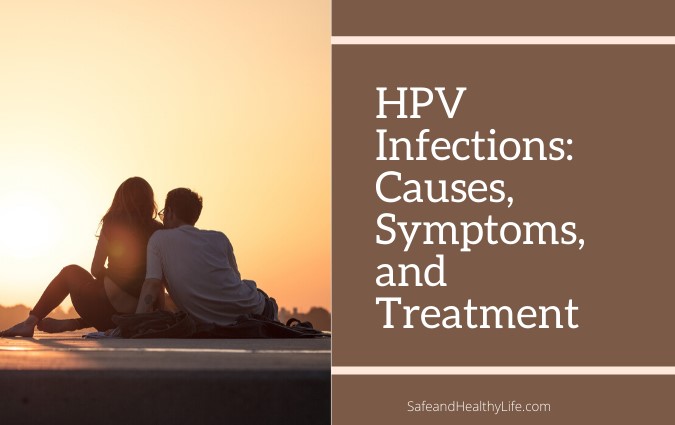
Human papillomavirus (HPV) is one of the most common sexually transmitted infections in the United States. About 14 million new cases are diagnosed every year.
There are several different types of human papillomavirus. HPV exposure is a viral infection that usually causes the development of the skin or mucous membrane (warts).
Human papillomavirus (HPV) has more than 100 types. Many forms of HPV infection cause warts, and some can induce cancers of different types. Some are known to cause some types of cancers, while others can cause genital warts. About 12,000 men and 19,000 women are diagnosed with cancers that are associated with HPV every year.
However, the good news is that with the assistance of a reliable women’s health physician, such as Dr. Richard Strathmann, it is possible to prevent and even manage HPV infections. Below is a discussion of some important things that you should know about HPV.
Causes of HPV
The virus is known to cause HPV infection is usually transmitted via skin-to-skin contact. In most cases, the virus is transmitted from one person to another through sexual contact, including oral, anal, and vaginal sex. However, intercourse is not required for transmission to occur.
Anyone who’s sexually active may get HPV even if you’ve had sex with just one person. You can also experience signs years after having intercourse with someone contaminated. Which makes it difficult to know when you became sick first.
Most people with HPV do not have any symptoms and they do not even know that they are infected. However, you can still contract the virus even if your infected partner does not have any apparent symptoms.
In some cases, a mother with HPV can pass the virus to a baby during delivery. If that happens, the baby may develop a medical condition known as respiratory papillomatosis.
Generally, genital warts appear in the genital area as a small bump or series of bumps. They may be large or small, raised or flat, or shaped like a cauliflower. For a fact, a health care provider may detect warts by looking at the genital area.
HPV Symptoms
In most cases, HPV infection does not lead to any noticeable symptoms or medical problems. In fact, most of the people who get infected with the virus never get to know about their infection, since it can go away on its own, without any treatment.
However, the absence of symptoms does not mean that the virus won’t get transmitted from one person to another.
Cancer-causing HPV (high-risk HPV)-these do not produce any symptoms in most cases, so people will not realize that anything is wrong. Cervical cancer indications tend to happen only after the disease has entered an advanced stage, and may include:
Irregular vomiting, bleeding during cycles or bleeding during sexual intercourse with the back, tiredness of the leg or pelvic pain, weight loss, loss of vaginal appetite, or smelly discharge of a single swollen leg.
If the virus fails to go away on its own, it has the potential to cause serious illness. For instance, it can cause warts in the throat and the genitals. HPV can also lead to cervical cancer and other types of cancers in the throat, head, and neck.
The cancers that are caused by HPV usually do not cause any symptoms until they are in their latest stages of development.
Therefore, it is imperative for you to go for regular testing and screening to ensure that any problem related to HPV is detected as early as possible.
| Read also: The Different Types of Biopsies and Tests to Diagnose Skin Cancer |
HPV Treatment
Like with most viral infections, treating HPV infection is not easy. In fact, there is no known cure for HPV. Cancer-causing HPV (high-risk HPV): if a cervical screening test shows that you have abnormal cells on your cervix, they may need to be extracted so they do not turn into cancer.
However, in most cases, the virus goes away on its own within two years. Treatments usually involve removing warts and boosting the body’s immunity to fight the virus.
Some common medications used to treat warts include Salicylic acid, Imiquimod, Podofilox, and Trichloroacetic acid. If the medications fail, your doctor can choose to get rid of warts surgically.
Radiotherapy is another option for some early-stage females with cervical cancer. It is used in some instances with surgery or radiation, or both.
In women, genital HPV examination is often part of cervical screening, which screens the cervix in abnormal cells (entrance into the womb). Cervical screening is not a disease procedure-it is a method for testing the safety of the cervix cells.
In men, there is currently no accurate HPV infection check, so detection is often very challenging as there are no signs of high-risk HPV. An anal test may be given to some individuals who are at high risk of developing anal HPV and anal cancer (for example men who have sex with men or people living with HIV).
| See also: How to Get Meds for HIV Treatment |
Complications of HPV
As with most STIs, HPV endangers you from other STIs, including HIV. An HPV-positive pregnant woman will transfer it on to her unborn child. As well as cervical cancer, HPV has been linked to prostate, penis, womb, vulva, and throat back cancer, although these are very uncommon. Related.
The Bottom Line
Overall, it is apparent that HPV infection is quite a common medical issue. Although the virus can go away on its own without any treatment, it has the potential to lead to serious medical issues. Therefore, it is imperative for you to ensure that you get tested regularly so that any HPV-related medical issues, such as cervical cancer and throat cancer, are detected early when it is still easy to treat.
These diseases are often transmitted sexually or through other interactions between the tissue and the skin.
Vaccines may help protect against HPV strains that cause genital warts or cervical cancer more definitely.
About The Author:
Anne Kamwila is a freelance content writer and a digital marketer. She is passionate to write on health, technology, and business-related guides, news, and books.



![[Adult Acne] Common Causes, Remedies, and Best Treatments Adult Acne](https://www.safeandhealthylife.com/wp-content/uploads/2023/02/Adult-Acne-150x150.jpg)
